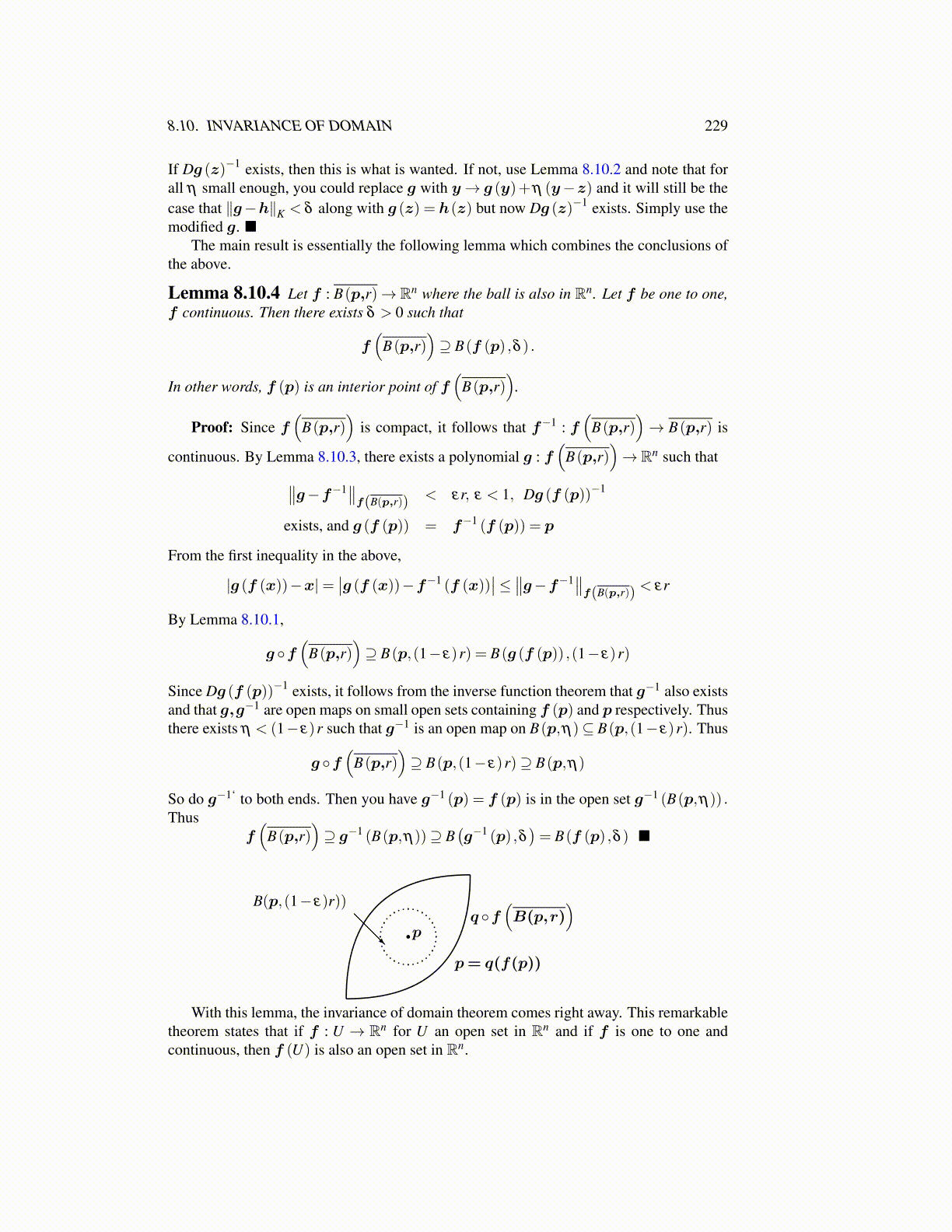
8.10. INVARIANCE OF DOMAIN 229
If Dg (z)−1 exists, then this is what is wanted. If not, use Lemma 8.10.2 and note that forall η small enough, you could replace g with y→ g (y)+η (y−z) and it will still be thecase that ∥g−h∥K < δ along with g (z) = h(z) but now Dg (z)−1 exists. Simply use themodified g. ■
The main result is essentially the following lemma which combines the conclusions ofthe above.
Lemma 8.10.4 Let f : B(p,r)→ Rn where the ball is also in Rn. Let f be one to one,f continuous. Then there exists δ > 0 such that
f(
B(p,r))⊇ B(f (p) ,δ ) .
In other words, f (p) is an interior point of f(
B(p,r))
.
Proof: Since f(
B(p,r))
is compact, it follows that f−1 : f(
B(p,r))→ B(p,r) is
continuous. By Lemma 8.10.3, there exists a polynomial g : f(
B(p,r))→ Rn such that∥∥g−f−1∥∥
f(B(p,r)) < εr, ε < 1, Dg (f (p))−1
exists, and g (f (p)) = f−1 (f (p)) = p
From the first inequality in the above,
|g (f (x))−x|=∣∣g (f (x))−f−1 (f (x))
∣∣≤ ∥∥g−f−1∥∥f(B(p,r)) < εr
By Lemma 8.10.1,
g ◦f(
B(p,r))⊇ B(p,(1− ε)r) = B(g (f (p)) ,(1− ε)r)
Since Dg (f (p))−1 exists, it follows from the inverse function theorem that g−1 also existsand that g,g−1 are open maps on small open sets containing f (p) and p respectively. Thusthere exists η < (1− ε)r such that g−1 is an open map on B(p,η)⊆ B(p,(1− ε)r). Thus
g ◦f(
B(p,r))⊇ B(p,(1− ε)r)⊇ B(p,η)
So do g−1‘ to both ends. Then you have g−1 (p) = f (p) is in the open set g−1 (B(p,η)) .Thus
f(
B(p,r))⊇ g−1 (B(p,η))⊇ B
(g−1 (p) ,δ
)= B(f (p) ,δ ) ■
pq ◦f
(B(p,r)
)B(p,(1− ε)r))
p= q(f(p))
With this lemma, the invariance of domain theorem comes right away. This remarkabletheorem states that if f : U → Rn for U an open set in Rn and if f is one to one andcontinuous, then f (U) is also an open set in Rn.